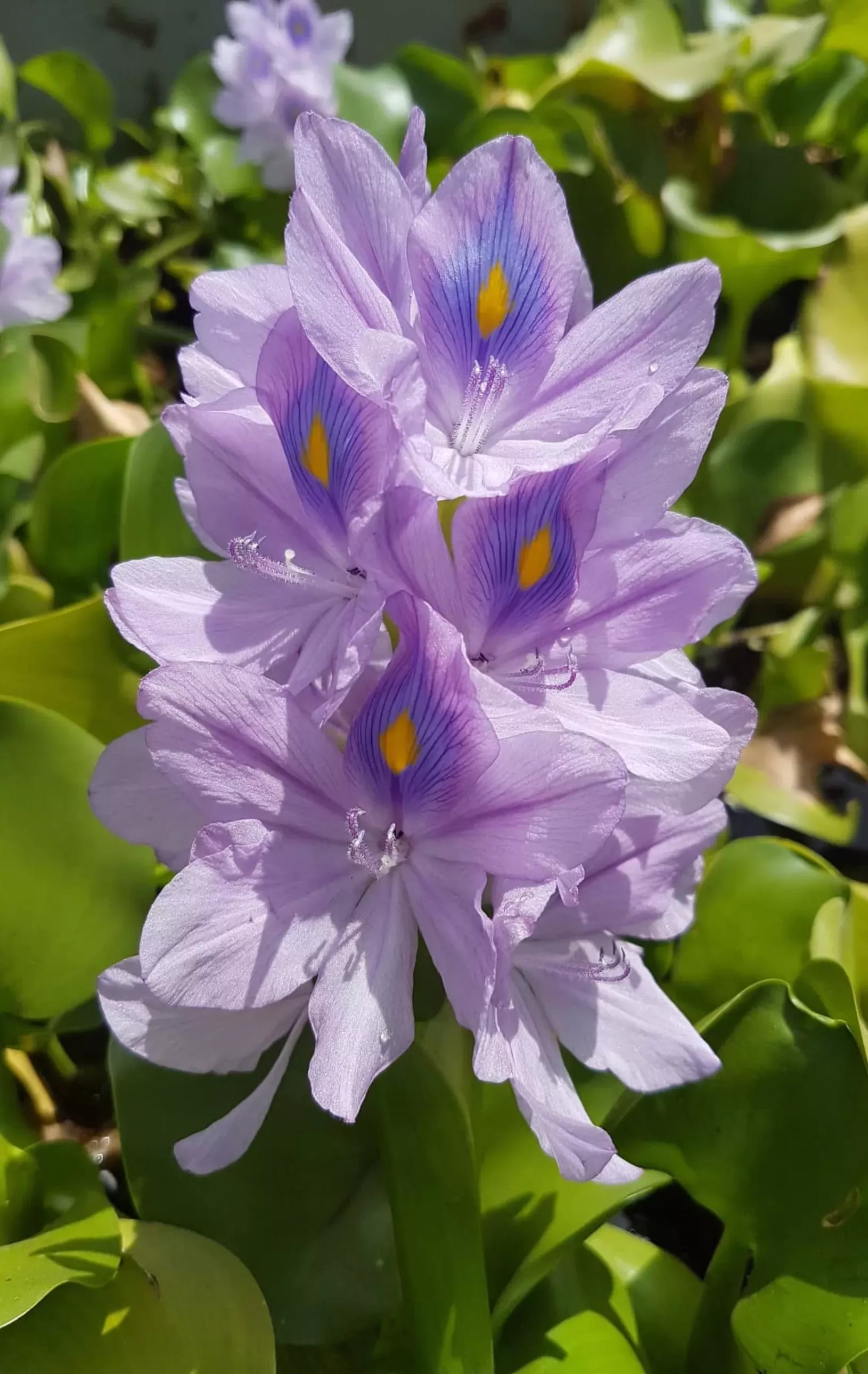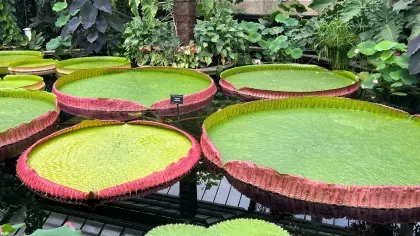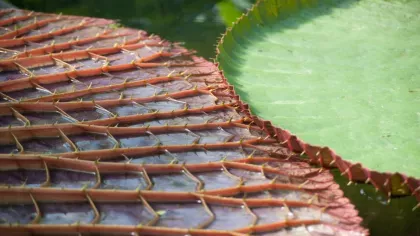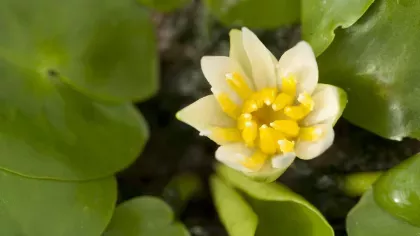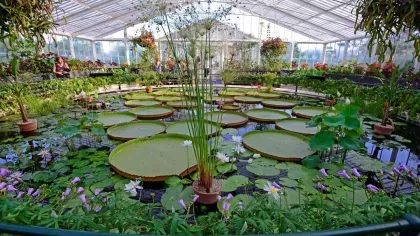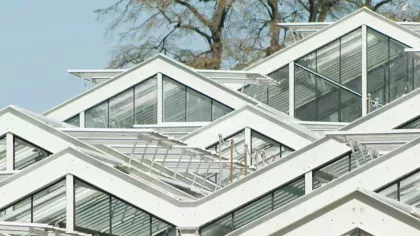
Water hyacinth
On this page
From humble beginnings in the northern tropics of South America, to being found on every continent on Earth (except Antarctica), the water hyacinth is the most invasive aquatic plant in the world.
An incredible fast-growing plant that is capable of cloning itself, mats of water hyacinth can rapidly spread to cover entire lakes and rivers
This can have a catastrophic impact on the ecosystem, pushing out other aquatic plants, reducing fish populations and even releasing pollutants into the water as they decay.
But scientists around the world are trying to find new ways to harness this aquatic menace for good, using it as a fuel source or a water treatment solution.
Water hyacinth populations have been recorded to double their numbers in just two weeks.
Plant description
Water hyacinth is a large aquatic plant that floats freely in the water, with thick, waxy, oval-shaped leaves around 15cm across growing in a cluster. At the base of the leaves are swollen bulb-like growths on the stalks that contain air-filled pockets keeping the plant afloat. Under the water is a mass of feathery, dark purple or black roots that hang. The flowers are light violet to pink, with a yellow mark near the centre, have six petals and grow at the top of stalks in clusters of around 10 flowers.




Plant uses
Food and drink
In some East Asian countries, such as Vietnam and Taiwan, water hyacinth is occasionally eaten in a salad.
Materials and fuels
Researchers are investigating whether water hyacinth can be combined with nutrient-rich waste like cow dung to produce biogas, clean water and fertiliser.
Water hyacinth is used as a cheap source of animal feed.
Water hyacinth is used on a small scale to produce paper and woven products.
Did you know?
One of the more successful methods of controlling the spread of water hyacinth is introducing weevils that feed on the air-filled stem tissue, causing the plant to sink.
Water hyacinth can absorb heavy metals from water, releasing them when they decay. While this can contaminate rivers and lakes, it’s an exciting prospect for cleaning wastewater from factories.
Water hyacinth is banned for sale in the EU, with Kew Gardens being one of the few places in the UK with a licence to grow it.
Where in the world?

Grows in fresh water in tropical, subtropical, warm, temperate and rainforest zones. Can survive in temperatures between 12 and 35°C
Find it in our gardens
Kew Gardens
A botanic garden in southwest London with the world’s most diverse living plant collection.
Location
Princess of Wales Conservatory
View map of Kew GardensBest time to see
Our work
Researchers in the United Kingdom, India and Uganda are investigating how water hyacinth can be used in combination with nutrient-rich waste, like cow dung, to produce biogas, clean water and fertiliser in developing countries.
The alternative supply of biogas from the water hyacinth could replace the unsustainable use of firewood for cooking, which is a particular problem in Sub-Saharan Africa.
Kew’s State of the World’s Plants and Fungi 2020 report explores the untapped potential of plants and fungi to provide solutions to sustainable development.
A team of researchers at Kew have been assessing current plant and fungal sources of energy and identifying species with potential to be used in the future.
They found that most research to date has focused on a very small number of crops, so some important new sources of energy have been largely overlooked.
It is vital we discover new sources of fuel and bioenergy to provide for the 840 million people worldwide with no access to electricity, and three billion with no access to clean cooking fuels and technology.
Unlocking the powerful potential of plants, like the water hyacinth, could be the solution to these global challenges.
